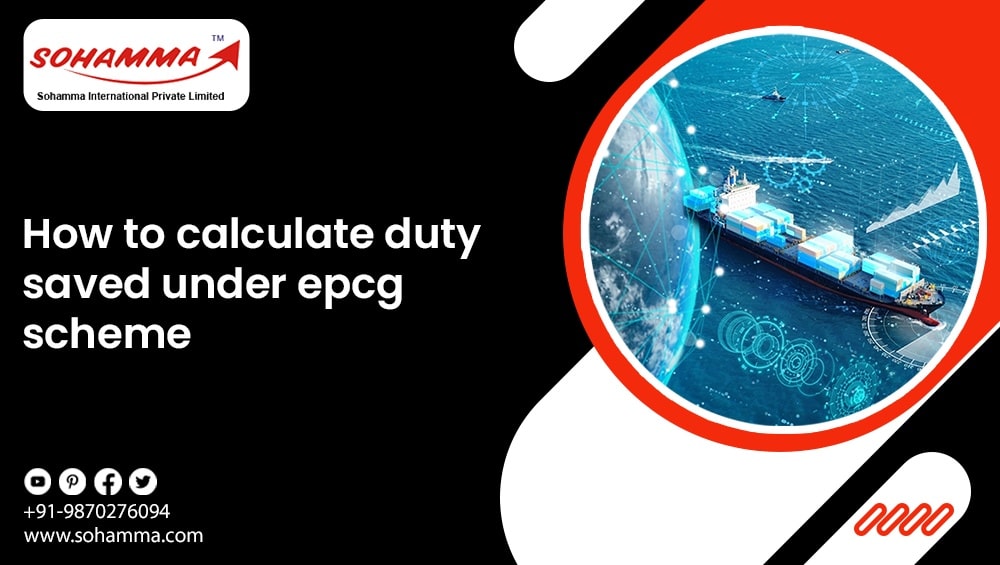

The Export Promotion Capital Goods (EPCG) scheme is designed to assist exporters via offering responsibility exemptions on capital items imports, encouraging technological advancement and manufacturing efficiency. Calculating the duty saved below this scheme requires a thorough know-how of different factors concerned. In this blog, we can discover the way to calculate EPCG duty savings and provide insights into the blessings of the scheme.
The EPCG scheme is aimed toward facilitating the import of capital goods at 0 customs responsibility, which exporters use to provide goods for export. It allows exporters to import machinery and equipment without paying the standard customs responsibility, provided they meet a selected export responsibility. The scheme applies to manufacturers, provider providers, and those worried about deemed exports.
The primary benefit is the obligation exemption, permitting corporations to enhance their manufacturing infrastructure without the extra fee of customs obligations, which could bring about massive savings.
To calculate duty saved beneath the EPCG scheme, you want to determine the amount of customs responsibility that could have been payable if the machinery or equipment was imported below ordinary instances. Here is a fashionable breakdown of the method:
List the machinery, system, or capital items you ought to import beneath the EPCG scheme.
Calculate the customs duty applicable to the products. The responsibility generally consists of Basic Customs Duty (BCD), Social Welfare Surcharge, and other applicable taxes. These charges vary depending on the sort of item.
Under the EPCG scheme, a hundred% of the customs responsibility is exempted. However, the exporter has to satisfy a specific export obligation, normally six instances of the responsibility stored inside six years.
The components for calculating the responsibility saved below the EPCG scheme benefits is:
Duty Saved
=
Value of Capital Goods Imported
×
Applicable Duty Rate
Duty Saved=Value of Capital Goods Imported×Applicable Duty Rate
For instance, if the capital items you are importing are worth INR 10 million, and the relevant responsibility price is 10%, your total duty stored might be:
Duty Saved
=
10
,
000
,
000
×
0.10
=
1
,
000
,
000
Duty Saved=10,000,000×zero.10=one million
This approach you store INR 1,000,000 in duties, which would otherwise had been payable if no longer for the EPCG scheme.
Let’s delve deeper into how to calculate EPCG responsibility financial savings:
Value of Capital Goods: Start with the CIF (Cost, Insurance, and Freight) cost of the capital items. This is the rate at which the products are being imported, along with transportation and insurance costs.
Duty Rate: Apply the specific duty rate for the goods, which includes Basic Customs Duty (BCD) and different applicable fees like the IGST (Integrated Goods and Services Tax) if relevant.
For instance, in case your equipment costs INR 20 million and the obligation rate is 10%, the calculation could be:
Duty Saved
=
20
,
000
,
000
×
0.10
=
2
,
000
,
000
Duty Saved=20,000,000×0.10=2,000,000
Thus, you store INR 2,000,000 beneath the EPCG scheme.
The obligation exemption is an enormous monetary comfort for groups. The key blessings include:
Reduction in Initial Capital Cost: By saving on customs obligations, organizations can gather superior equipment and generation at decreased expenses.
Enhanced Competitiveness: With entry to higher generation and machinery, exporters can enhance their production skills, mainly to achieve higher product quality and price efficiency.
Encouragement for Exporters: The scheme incentivizes companies to export extra by offering responsibility exemptions, with a selected export obligation tied to the responsibility stored.
Long-Term Savings: The EPCG scheme can generate lengthy-time period financial savings for organizations that often invest in capital goods for export manufacturing.
One of the situations for availing benefits below the EPCG scheme is meeting the export obligation. The exporter should export goods well worth six times the duty saved inside six years. For instance, in case you shop for INR 1,000,000 in obligations, you ought to export items really worth INR 6,000,000 within six years to satisfy your export responsibility.
If the export responsibility isn't met, consequences may apply, making it important to plot exports carefully.
The calculation procedure includes:
Determining the CIF fee of capital goods
Calculating the whole relevant responsibility (BCD, surcharge, and so forth.)
Applying the duty-saving formulation to determine the exact duty exempted
Keeping music of export obligations linked to the obligation stored
By cautiously following this calculation system, exporters can gain from sizable value financial savings while contributing to the growth of India’s export quarter.
The EPCG scheme> is a crucial tool for Indian exporters, letting them modernize their manufacturing without incurring heavy import duties. By calculating the duty saved beneath the EPCG scheme, exporters can decide the fee blessings and plan their investments and export techniques correctly.
For exporters at Sohamma International Pvt. Ltd> seeking to leverage the scheme, information on the EPCG duty savings formulation and enjoyable export duties is important to maximizing the scheme’s blessings. With right making plans, the EPCG scheme can pressure boom, beautify manufacturing first-class, and improve competitiveness in global markets.